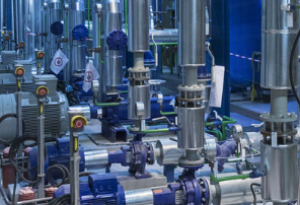Service-based models for intelligent pumps to emerge with more cross-industry collaborations, Frost predicts

Increased customer demand to derive maximum output from legacy equipment is driving pump manufacturers to integrate enhanced technological features into existing pumps.
According to research by Frost & Sullivan, they started off integrating variable frequency drives (VFDs) and controllers with the aim of conserving energy, monitoring performance, controlling the speed, and measuring a few vital parameters, but these benefits are beginning to prove insufficient for next-generation automated industries. The rising adoption of Industrial Internet of Things (IIoT) technologies has intensified the need to include capabilities that cantransform intelligent pumps into smart pumps.
“With IIoT, there is a huge demand for sophisticated techniques such as predictive maintenance, remote monitoring, digital twin technology, Artificial Intelligence(AI), and Virtual Reality/Augmented Reality (VR/AR),” says Srividhya Murali, senior research analyst, Industrial team at Frost & Sullivan. “Intelligent pumps will receive a further boost with pump companies adopting the 2020 strategy, wherein the focus will be on saving energy using advanced and sustainable technologies.”
Frost & Sullivan’s recent analysis, European Intelligent Pumps and Controllers Market—Driving Smart Revolution, Forecast to 2024, analyses the benefits of incorporating IIoT technology into pumps. It discusses the impact of smart pumps on end-user industries such as water and wastewater, oil & gas (O&G), chemicals, pharmaceuticals, building services, and food and beverage. Lastly, it presents the perspectives of major participants on key market trends.
“With software-based predictive analysis becoming a highly popular feature, there will be a surge in the number of collaborations between pump manufacturers and the IT sector,” noted Murali. “Furthermore, the shift in market focus from product-centric to service-centric will lead to new types of business models that will feature more lifecycle management contracts.”
The other important technologies are digital twin and AR/VR, as they help companies eliminate the need to have a worker on hazardous sites. This will not only enhance workers’ safety but also reduce the cost of operations. The other ways in which intelligent pumps can boost companies’ revenue opportunities include:
- After-sales service. Intelligent pump vendors can offer prompt and efficient services remotely. On-the-spot problem solving can decrease replacement time and charges.
- Employing 3D printing. In addition to printing complex geometries for futuristic designs, 3D printing uses only the exact quantity of materials needed to make parts, which eventually results in less waste.
- Connected plants. This improves visibility and transparency within supply chains in organisations, helping managers plan their operations efficiently.
- Predictive maintenance. Asset maintenance and cost of ownership are drastically reduced by the use of this technology.
European Intelligent Pumps and Controllers Market—Driving Smart Revolution, Forecast to 2024 is part of Frost & Sullivan’s global Industrial Automation & Process Control Growth Partnership Service programme.
Comment on this article below or via Twitter @IoTGN
